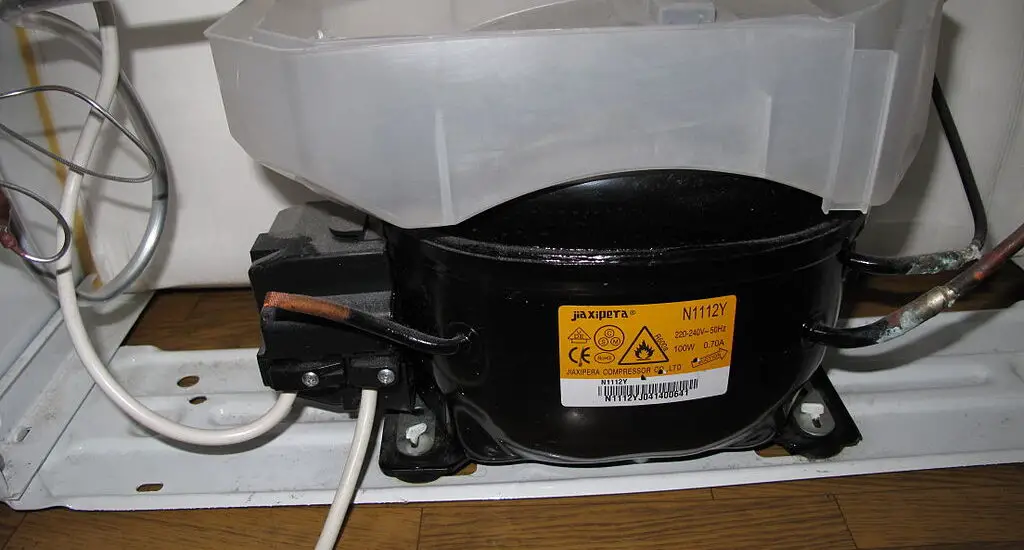How to replace fridge compressor is a question that often stumps many homeowners. It’s one of those tasks that can seem pretty daunting, but with the right tools and a step-by-step guide, you can take this challenge head-on.

Table of Contents
Introduction to How to Replace a Fridge Compressor
The fridge compressor is your refrigerator’s heart. It’s the device that does the heavy lifting, keeping your food cold and your fridge humming. You ever notice your fridge stopping its hum only to start again? That’s the compressor doing its thing!
The Importance of the Refrigerator Compressor
The compressor is the powerhouse of your refrigerator, responsible for pumping refrigerant through the appliance’s coils, creating the cooling effect. Without it, your fridge turns into a large, ineffective box.
Can I Replace a Refrigerator Compressor Myself?
Can you replace a fridge compressor on your own? Heck, yes! It might feel like a mountain to climb, but you’ve got this. But hey, it’s not for everyone, and that’s okay too.
Pros and Cons of DIY Compressor Replacement
Doing it yourself is definitely cheaper, and there’s a certain satisfaction in tackling the job. But it can be a bit technical and time-consuming, so it’s essential to weigh that against the cost of getting a pro to do it.
How Long Does It Take to Replace a Refrigerator Compressor?
Well, it’s not a five-minute job, that’s for sure. You’re looking at anywhere from 2 to 4 hours. You’ll need to factor in some extra time if it’s your first rodeo with a fridge compressor.
Preparations for Fridge Compressor Replacement
Preparation is key here, friends. It’s like baking a cake; you need the right tools and ingredients before you can get started.
Necessary Tools for Compressor Replacement
Tools you’ll need include a socket wrench set, needle-nose pliers, a multitester, and a pry bar. These are the MVPs of your compressor replacement team.
List of Tools and Where to Buy Them
Wondering where to find these tools? You can pick them up at any decent hardware store, or even online on sites like Amazon or Home Depot.
Safety Precautions Before Starting
Before we jump in, remember – safety first! This isn’t a game of tag; you’ll be dealing with some serious equipment here.
Personal Protective Equipment (PPE)
Make sure to use gloves and safety goggles to protect your hands and eyes. Trust us; you don’t want to find out what happens if you skip this step.
Electrical Safety Measures
Don’t forget to unplug the fridge before you start anything. It might seem obvious, but you’d be surprised how many folks forget this crucial step.
Check out these other related articles…
Water Cooler Compressor Not Working: Proven Solutions
How to Check Refrigerator Compressor: Your Handy DIY Guide
Fridge Compressor Gurgling: Ultimate Troubleshooting Guide
Difference Between Fridge and Freezer Compressor [Revealed]
Walk-In Freezer Compressor Icing Up: Powerful Solutions!
How to Fix a Deep Freezer Compressor: A Detailed DIY Guide
Chest Freezer Compressor Running but Not Cooling: Sure Fixes
Step-by-Step Guide on How to Replace Fridge Compressor
Now, here comes the main part. Brace yourself as we walk through each step on how to replace fridge compressor. Remember, patience is key in this process.
Unplugging the Refrigerator and Removing the Back Panel
First thing’s first. Unplug the refrigerator from the power source. Safety is paramount, right? Then, take off the back panel. That’s where your compressor is hidden.
Tips to Safely Unplug and Expose the Compressor
While unplugging, handle the plug and not the cord. You wouldn’t want an accidental electric shock. And when removing the back panel, do it gently. We don’t want to damage any part of the refrigerator.
Detaching the Old Compressor
Now, carefully disconnect the old compressor. It’s connected to your fridge with some wiring and a couple of mounting bolts. Keep track of what goes where. You’ll need that for installing the new one.
Disconnecting the Wiring
See those wires going into your compressor? They need to come out. It’s a good idea to take a photo before disconnecting anything. It’ll serve as a handy reference when you’re wiring the new one.
Removing the Compressor Mounting Bolts
Next, unscrew the mounting bolts. Some elbow grease might be required here. Once done, carefully remove the old compressor.
Installing the New Compressor
Now, it’s showtime for your new compressor. Carefully position it where the old one sat, connect the wires, and secure it with the mounting bolts.
Comparing the Old and New Compressor
Before installing, take a moment to compare the old and new compressors. They should be identical or at least very similar. If they’re not, you might have the wrong part.
Connecting the New Compressor to the Fridge
Time to connect the new compressor. Use the photo you took earlier as a guide to connect the wires. Ensure that everything is snug and secure. We wouldn’t want anything loose, would we?
Re-securing the Back Panel
Almost done. Put the back panel in its place and secure it. Then, plug the refrigerator back in.
Post-Replacement Checks and Troubleshooting
Congrats on installing your new compressor. But, before we call it a day, let’s make sure everything’s working as it should.
Checking the Fridge’s Functionality
Let the fridge run for a while. The compressor should kick in and start cooling. If you feel a drop in temperature, you’ve nailed it!
How to Know if the New Compressor is Working Properly
A working compressor will make a humming noise and, most importantly, cool the fridge. If you’ve got these two signs, you’re golden!
Common Troubleshooting After Compressor Replacement
Don’t sweat if things aren’t perfect right away. Some common issues might pop up after a compressor replacement.
Potential Issues and How to Fix Them
Not cooling enough? Check the thermostat setting and ensure all seals are intact. Noise issues? Check if the compressor is installed correctly and firmly. You got this!